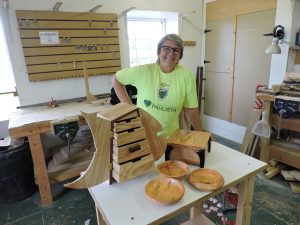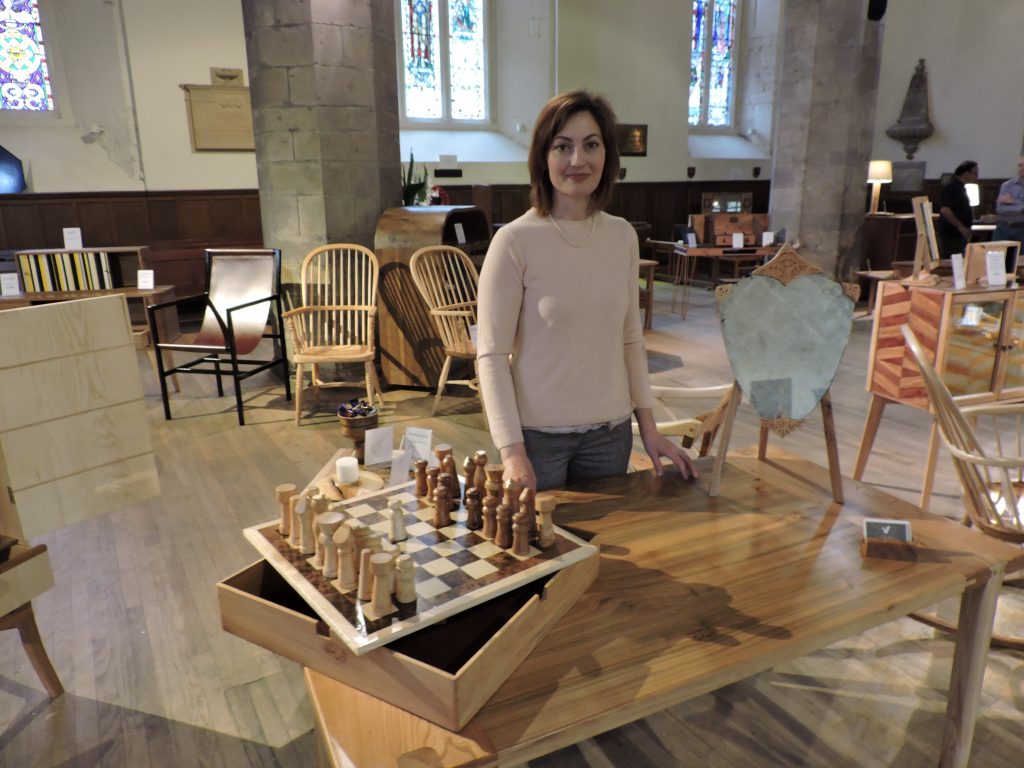We recently highlighted the issue of women coming into woodworking, and how we’d like to see more female applicants for our courses.
So it was pleasing that our cause was highlighted this week in a double-page spread in the Sunday Herald, one of Scotland’s leading quality newspapers.
Because there is no reason why women shouldn’t pursue vocations in fine furniture design and making.
In our experience, women often have a natural affinity with woodworking and an instinctive eye for design and detail.
Out of a total of 25 professional course students, this year we had six female students – from the UK, India, New Zealand and the USA.
One of those students, Vanessa Johnston from Seattle (pictured above), won the Chippendale Society’s Prize for 2018, and a Scottish student won our Student of the Year award. Two years ago a female Russian student won our Student of the Year.
In 2017 we had three women students, and in both 2016 and 2015, it was five – so this past year saw the best ratio of male to female students.
However, the school also runs one week introductory courses and one month intermediate courses, and these are also seeing a rising number of female applicants.

For example, the last two students on our intermediate course were women. One, Mara Dreger (pictured above), a medical doctor, came all the way from Brazil.
The other, Sarah Quick, was a former development officer with the Scottish Rugby Union, who has been a keen hobbyist for some years.
So it’s gratifying that a cause we are championing has been echoed in the mainstream media – a message of equality in a profession that is open to everyone.
